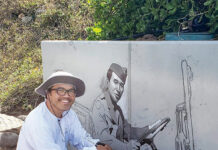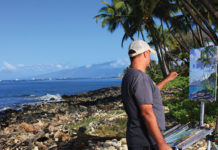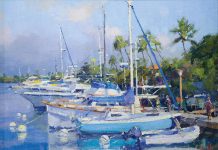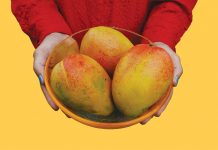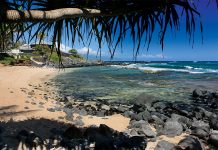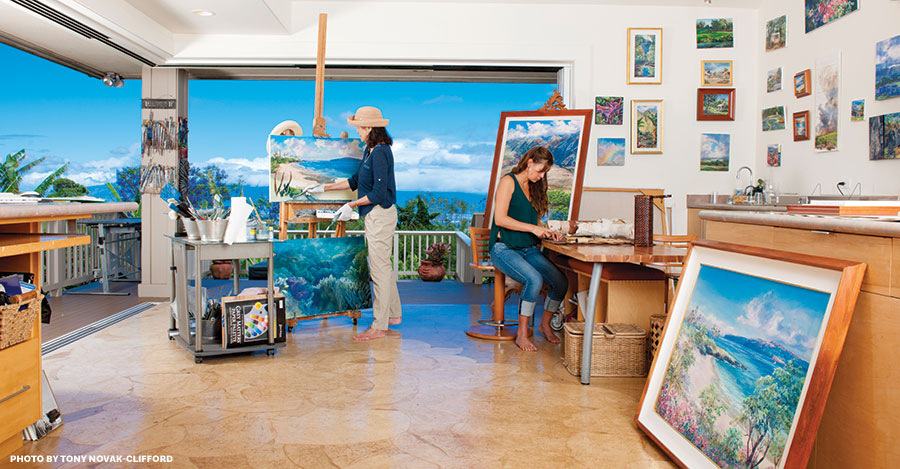
She was born in Kohala, on the Big Island, well before Kohala was much more than a sugar plantation. After college on the Mainland, she came home, married, lived on O‘ahu, and took an art class for purely practical reasons. “I signed up for a free workshop because my walls were blank. It didn’t occur to me to buy anything. I always made everything I needed. I refinished furniture. I sewed upholstery and drapes. Keoki [her husband] complained once, ‘Why can’t we buy anything new?’”
As luck would have it, her early art teachers were masters. Lloyd Sexton was an eminent landscape artist of plantation-era Hawai‘i. Then “Peter Hayward showed me how to work with a palette knife. That became my primary tool.” She found herself in a klatch of older women who kept a regular schedule of open-air painting excursions. (“‘Plein air’ is just painting on location,” she says, “being surrounded by air. That’s how I learned. I finish things in the studio.”) The klatch held home showings every three months. Then Betty Hay’s mother-in-law took one of her paintings to a gallery on Front Street in Lahaina and sold it. “I was so excited I forgot to sign it. That was ’67 or ’68.” Since then Betty Hay has been single-minded and prolific.
Her way with oils is distinctive. Even more at-a-glance recognizable is Betty Hay’s choice of subject matter — wild, unpeopled landscapes, often with dizzying vistas. As a consequence, Freeland family vacations never involved urban places. The family photo albums feature crags and canyons with minuscule humans waving in the corners. When the kids were young, she hired a nanny so that she could head out into the wilds with her VW van and easel. After her three children were grown, she contemplated getting a job. “But this is what I do.”

